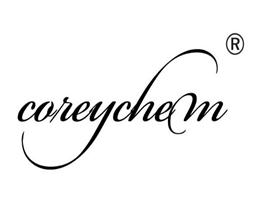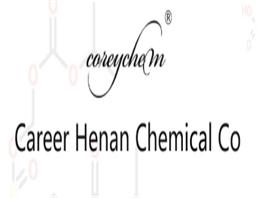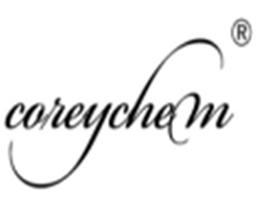
Ketoconazole
| Price | $7 |
| Package | 1kg |
| Min. Order: | 1kg |
| Supply Ability: | 100KG |
| Update Time: | 2019-07-06 |
Product Details
| Product Name: Ketoconazole | CAS No.: 65277-42-1 |
| Min. Order: 1kg | Purity: 99% |
| Supply Ability: 100KG | Release date: 2019/07/06 |
JD607
| Product Name: | Ketoconazole |
| Synonyms: | ,3-dioxolan-4-yl)methoxy)phenyl)-,cis-;fungarest;fungoral;ketoconazol;ketoderm;ketoisdin;kw-1414;nizoral |
| CAS: | 65277-42-1 |
| MF: | C26H28Cl2N4O4 |
| MW: | 531.43 |
| EINECS: | 265-667-4 |
| Product Categories: | Active Pharmaceutical Ingredients;Organics;Antifungals for Research and Experimental Use;Antitumors for Research and Experimental Use;Biochemistry;Antibiotic Explorer;Inhibitors;Intermediates & Fine Chemicals;Pharmaceuticals;API;API's;Antifungal;Heterocycles;Isotopically Labeled Pharmaceutical Reference Standard;KETOZOLE |
| Mol File: | 65277-42-1.mol |
 |
|
| Ketoconazole Chemical Properties |
| Melting point | 146°C |
| density | 1.4046 (rough estimate) |
| refractive index | -10.5 ° (C=0.4, CHCl3) |
| Fp | 9℃ |
| storage temp. | 2-8°C |
| solubility | methanol: soluble50mg/mL |
| pka | pKa 3.25/6.22(H2O,t =25,I=0.025) (Uncertain) |
| color | white to light yellow |
| Water Solubility | Soluble in DMSO, ethanol, chloroform, water, and methanol. |
| Merck | 14,5302 |
| CAS DataBase Reference | 65277-42-1(CAS DataBase Reference) |
| Safety Information |
| Hazard Codes | T,N,F |
| Risk Statements | 25-36/37/38-23/24/25-50/53-48/22-60-39/23/24/25-11 |
| Safety Statements | 36-45-36/37/39-26-61-60-53-36/37-16-7 |
| RIDADR | UN 2811 6.1/PG 3 |
| WGK Germany | 3 |
| RTECS | TK7912300 |
| HazardClass | 6.1(b) |
| PackingGroup | III |
| Hazardous Substances Data | 65277-42-1(Hazardous Substances Data) |
| Toxicity | LD50 in mice, rats, guinea pigs, dogs (mg/kg): 44, 86, 28, 49 i.v.; 702, 227, 202, 780 orally (Heel) |
| MSDS Information |
| Provider | Language |
|---|---|
| cis-1-Acetyl-4-(4-((2-(2,4-dichlorophenyl)-2-(1H-imidazol-1-ylmethyl)-1,3-dioxolan-4-yl)methoxy)phenyl)piperazine | English |
| SigmaAldrich | English |
| Ketoconazole Usage And Synthesis |
| Antifungal drug | Ketoconazole is a broad-spectrum antifungal imidazole with commercially available product being under the trade name of Jindakening, Meikangling and keNing. It interferes with the activity of fungal cytochrome P-450 with a high selectivity, thus inhibiting the biosynthesis of ergosterol in fungal cell membrane. It is effective in treating both shallow, deep fungal infections and can inhibit both fungal growth and the transition from spores to mycelium to prevent the further infection. It has antifungal effect on Candida genus, Fonsecaea, Coccidioides, Histoplasma, Sporothrix spp and Trichophyton. Clinically, it is suitable for the treatment of ringworm, athlete's foot, and skin ringworm, tinea, jock itch, and thrush, tinea versicolor as well as cutaneous candidiasis. Ketoconazole lotion, as a skin external use, is mainly used for clinical treatment and prevention of various kinds of infections caused by Malassezia such as tinea versicolor, seborrheic dermatitis and scalp pityriasis (dandruff), and can quickly alleviate the desquamation and itching caused by seborrheic dermatitis and scalp pityriasis. |
| Pharmacological effects | 1. Pharmacology: ketoconazole belongs to azole-class antifungal drugs and has antifungal activity against various kinds of genus of deep fungal infections such as Candida, Fonsecaea, Coccidioides, Histoplasma, Sporothrix spp as well as Trichophyton. However, this product has a relative weak activity against Aspergillus, Sporothrix schenckii as well as some species of Dermateaceae and Mucor. This product, through actively interfering with the activity of cytochrome P-450, is capable of inhibiting the biosynthesis of the major steroids-ergosterol of the fungal cell membrane. Therefore, it destroys the fungal cell membrane and changes its permeability, resulting in the leakage of important intracellular material. Ketoconazole can also inhibit the biosynthesis of fungal triglyceride and phospholipid biosynthesis, inhibit the activity of oxidase and peroxidase, causing accumulation of intracellular hydrogen peroxide which further leads to cell submicroscopic structural degeneration and necrosis. For candida albicans, it can also suppress the transition process from spores to aggressive mycelium. 2. Toxicology: Long-term animal toxicity experiments have showed that ketoconazole can significantly increase the level of alkaline phosphatase and cause liver cell degeneration. |
| Pharmacokinetics | This product can be dissolved and absorbed in gastric acid. Upon the reduction of the acidity of gastric acid, its absorption can be reduced. Administration after meals can increase its absorption with the bioavailability of administration after meal being as high as 75%. After the single-dose oral administration of 200mg and 400mg, the peak plasma concentrations were 3.6 ± 1.65mg/L and 6.5 ± 1.44mg/L, respectively with the time for reaching peak being 1-4 hours. After the absorption, this product is widely distributed in the body and can reach the synovial fluid of inflammation, saliva, bile, urine, tendons, skin and soft tissue, feces and so on. It has a poor penetrating capability through the blood-brain barrier. In most cases, the drug concentration in the cerebrospinal fluid is less than 1mg/L. This product can also penetrate through the blood placental barrier. The binding rate of serum protein is about 90% or more with the elimination half-life being 6.5 to 9 hours. Some part of the drugs is subjected to metabolism in the liver through degradation into inactive imidazole ring and piperazine ring. The metabolites and prototype drug is mainly excreted through the bile. The drug excreted through the kidneys only accounts 13% of the administered dose, of which about 2% to 4% for drug prototype. The product can also be secreted into milk. |
| Indications | Ketoconazole is suitable for treating the following systemic fungal infections: 1. Candidiasis, chronic mucocutaneous candidiasis, oral candidiasis infection, Candida urinary tract infections as well as chronic, recurrent vaginal candidiasis which can be cured by topical therapy. 2. Dermatitis blastomycosis. 3. Coccidioidomycosis. 4. Histoplasmosis. 5. Chromomycosis. 6. Paracoccidioidomycosis. It can be used for treating fungal skin diseases, hair ringworm and tinea versicolor caused by fungi and yeasts. When local therapy or oral administration of griseofulvin is invalid, or griseofulvin is unacceptable in the treatment of severe refractory fungal skin infection, we can choose the treatment of this drug. The above information is edited by the chemicalbook of Dai Xiongfeng. |
| Side effects | External administration 1. Common erythema, burning, itching, stinging or other irritation, folliculitis, skin atrophy and thinning as well as telangiectasia. 2. It can be observed of dry skin, hirsutism, striae atrophicae and increased susceptibility to infection. 3. Long-term medication may cause cortex hyperthyroidism, manifested as hirsutism, acne, moon face, osteoporosis and other symptoms. 4. It can be occasionally observed of allergic contact dermatitis. Side effects of oral administration 1. Hepatotoxicity: ketoconazole can cause increased serum aminotransferase (AST, ALT) level and is reversible. It can be occasionally observed of severe liver toxicity, primarily being liver cell type with the incidence being about 0.01%. The clinical manifestations include jaundice, dark urine, white-color faeces and abnormal fatigue, etc., these effects can usually resume after the withdrawal of the drug, but there are also cases of deaths; there are also cases of hepatitis in children. 2. Gastrointestinal reaction: nausea, vomiting and anorexia are common cases. 3. Gynecomastia and lack of semen; this is related to the effect of this product on suppression of the biosynthesis of testosterone and adrenal cortical hormone. |
| Precautions | 1. Take it with caution upon the following cases: lack of gastric acid (may cause the reduction of the absorption of the product). Alcoholism or liver damage (it can cause liver toxicity). 2.Before or during the treatment, the patients should be regularly subject to monitoring of liver function. Elevated serum aminotransferase may not be accompanied by symptoms of hepatitis, however, if the serum aminotransferase value continues to rise or increase, or associated with liver toxicity symptoms, we should discontinue ketoconazole treatment. 3. For simultaneous administration of cimetidine or furan thiamine, take them at least 2 hours after taking this drug. 4. This product can cause photosensitivity reactions. Therefore, during the medication, we should avoid prolonged exposure to bright light and can wear colored glasses. 5. It is not allowed to take alcoholic beverages while taking the drug. Pay attention if dizziness or drowsiness occurs. 5. Patients of renal dysfunction don’t need to be subject to reduced dose upon taking it. 6. Ketoconazole has a very poor capability of penetrating blood-brain barrier and is not suitable for the treatment of fungal meningitis. This product also has poor efficacy in treating Aspergillus, Mucor or maduromycosis and thus is also not suitable. 7. Interfere with the diagnosis: can cause elevated serum aminotransferase, can also cause increased level of hemobilirubin. |
| Pregnant and lactating women | The product can penetrate through the blood placental barrier. Animal experiments have shown that the product can be teratogenic such as syndactylia, lack of finger (toe) and dystocia in rats. US FDA data has shown that the application of this drug in pregnant women should be classified into Class C, namely being toxic in animal studies but is lack of adequate information in human studies. Therefore, pregnant women should be avoided for using it. Ketoconazole can be secreted into breast milk. The administration of it for humans has not found any issues, but the product can increase the likelihood of the occurrence of neonatal kernicterus, lactating women should weigh both advantages and disadvantages for using it. |
| Chemical Properties | It is white crystalline powder with the melting point being 146 ℃ and insoluble in water. |
| Uses | It is antifungal drug for being used to treat athlete's foot and excessive dandruff. |
| Production method | Put the mixture containing 2.4 parts of 1-acetyl-4-(4-hydroxyphenyl) piperazine, 0.4 part of 78% sodium hydride, 75 parts of dimethyl sulfate, 22.5 parts of benzene at 40 ℃ for stirring of 1 hour, followed by addition of 4.2 parts of 2-(2,4-dichlorobenzyl-2-(1H-imidazol-1-yl-methyl)-1,3-dioxolane-4-ylmethyl methanesulfonate. Stir at 100 °C overnight with the reaction product resulting in 3.2 parts ketoconazole after treatment. |
| Category | Toxic substances |
| Toxicity grading | Highly toxic |
| Acute toxicity | Oral-rat LD50: 166 mg/kg; Oral-Mouse LD50: 618 mg/kg. |
| Flammability and hazardous characteristics | It is combustible with burning releasing toxic chloride fumes and nitrogen oxides. |
| Chemical Properties | White or almost white powder. |
| Storage characteristics | Treasury: ventilation, low-temperature and dry; store it separately from food raw materials. |
| Uses | Inhibits cytochrome P-450 dependent steps in the biosynthesis of steroid hormones in vivo. Antimetastatic and antineoplastic activity. Orally active 5-lipoxygenase and thromboxane synthase inhibitor |
| Uses | antifungal, PXR/SRC1 & CAR/SRC1 inhibitor |
| Uses | For the treatment of the following systemic fungal infections: candidiasis, chronic mucocutaneous candidiasis, oral thrush, candiduria, blastomycosis, coccidioidomycosis, histoplasmosis, chromomycosis, and paracoccidioidomycosis. |
| Uses | An inhibitor of CYP proteins, thromboxane synthetase, and 5-LO |
| Brand name | Ketozole (Taro); Nizoral (Janssen); Nizoral (McNeil). |
| Extinguishing agent | Dry powder, foam, sand, carbon dioxide, water mist. |
| Biological Activity | Antifungal agent; potent inhibitor of cytochrome P450c17. |
| Ketoconazole Preparation Products And Raw materials |
| Raw materials | Bromine-->Triethylamine-->Sodium hydride -->Imidazole-->2,2'-Iminodiethanol-->p-Toluenesulfonamide -->2,4 DICHLORO BENZENE |
| Preparation Products | Itraconazole |
Company Profile Introduction
Established in 2014,Career Henan Chemical Co. is a manufacturerspecializing in the sale of fine chemicals.
Mainly deals in the sales of:
Pharmaceutical intermediates
OLED intermediates:
Pharmaceutical intermediates;
OLED intermediates;
You may like
Recommended supplier
| Product name | Price | Suppliers | Update time | |
|---|---|---|---|---|
| $72.00/500mg |
VIP5Y
|
TargetMol Chemicals Inc.
|
2024-11-19 | |
| $72.00/500mg |
VIP3Y
|
TargetMol Chemicals Inc.
|
2024-11-19 | |
| $100.00/1KG |
VIP4Y
|
Hebei Lingding Biotechnology Co., Ltd.
|
2024-11-01 | |
| $10.00/25KG |
VIP6Y
|
Hebei Weibang Biotechnology Co., Ltd
|
2024-10-24 | |
| $10.50/1KG |
VIP4Y
|
Hebei Chuanghai Biotechnology Co,.LTD
|
2024-08-20 | |
| $0.00/1Kg/Bag |
VIP4Y
|
Sinoway Industrial co., ltd.
|
2024-06-27 | |
| $1.00/1g |
VIP1Y
|
Apeloa production Co.,Limited
|
2024-05-22 | |
| $18.00/10kg |
VIP1Y
|
Hebei Shengyang Water Conservancy Engineering Co., Ltd.
|
2024-05-10 | |
| $0.00/1kg |
VIP2Y
|
Hebei Kingfiner Technology Development Co.Ltd
|
2024-05-07 | |
| $10.00/1kg |
Ouhuang Engineering Materials (Hubei) Co., Ltd
|
2024-04-26 |
- Since: 2014-12-17
- Address: No.967,15th Floor,Unit 7, Building 1, No.70 of DianChang Road, High-tech Development Zone, Zhengzho
INQUIRY
楊俊青
sales@coreychem.com
sales@coreychem.com






 China
China